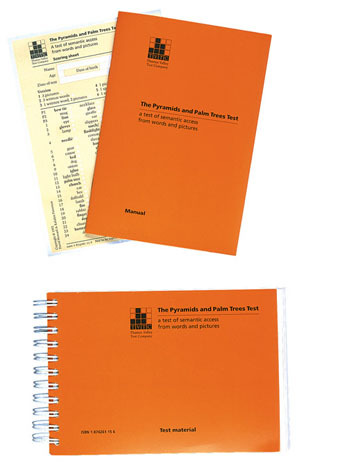The Pyramids and Palm Trees test assesses semantic access from words and pictures, and determines the degree to which a subject can access meaning from pictures and words. Guidance on using this test in your telepractice
Pyramids and Palm Trees Test
Pyramids and Palm Trees
The Pyramids and Palm Trees test assesses semantic access from words and pictures, and determines the degree to which a subject can access meaning from pictures and words. Guidance on using this test in your telepracticeChoose from our formats
Kits
Starter & complete kits, print & digital
1 option
Test forms & reports
Booklets, record forms, answer sheets, report usages & subscriptions
1 option
Support materials
Manuals, stimulus books, replacement items & other materials
1 option
All products
All tests and materials offered for Pyramids and Palm Trees
3 options